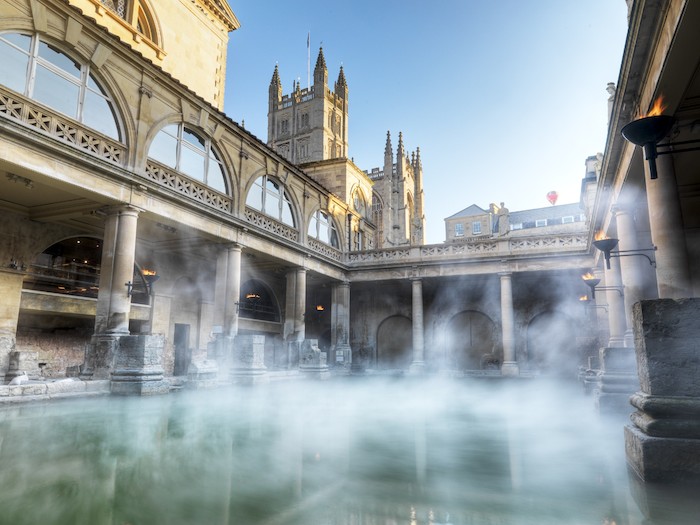History of the Roman Baths
Here in Bath, we're lucky enough to have some of the most interesting historical sights in the UK, one of them being the Roman Baths. But how much do you actually know about the Roman Baths? Here, we give you a bit of an insight to the fascinating history behind it...
Ever wanted to know a bit more about the famous, much loved Roman Baths? Here are a few questions you may have had...and we've answered them for you!
When were the Roman Baths built?
The temple was constructed by the Celts in 60 - 70 AD, and the bathing complex was then built up over the next 300 years. The Romans built the baths using the 1.3 million litres of naturally-heated water that rose to the surface naturally each day. They were a huge draw to people who travelled across the country to bathe in the waters and worship at the religious temple. Unfortunately, after the Roman withdrawal from Britain in the 5th century, the baths were neglected and fell into disrepair, before being destroyed by flooding.
By the 17th century, doctors were prescribing the thermal waters as a drink to help cure many diseases and illnesses. In the late 1800's, Major Charles Davis – the city surveyor architect - made a discovery, which was the remains of the Roman Baths. He worked on recovering them and it then opened once again to the public in 1897.
How many baths were there at the Roman Baths?
The Roman Baths were split into three principal rooms.
- The Tempidarium - which was the warm bath
- The Caldarium - the hot bath where slaves would rub their masters all over with perfumed oil and then scrape it of with a knife called a strigil.
- The Frigidarium - which was the cold bath people swam in.
How did the water get pumped into the Roman Baths?
The Romans got the water to the Baths by building aqueducts to carry fresh water from lakes or rivers. Roman engineers had to constantly monitored the water levels and aqueducts to make sure that there was enough water running in the city. Only wealthy people had access to their very own baths, so many people had to rely on the public Roman Baths.
Are the Roman Baths safe for bathing in?
The water that flows through the Roman Baths is considered unsafe for bathing, partly due to the water having passed through the still-functioning original lead pipes. The bigger danger, is now considered to be infectious diseases that are within the waters.
In October 1978, a young girl, who was swimming for a local swimming club in the restored Roman Baths, contracted meningitis and died which lead to the closure of the bath for several years.
How were the Roman Baths used exactly?
Visitors would pay their entrance fee, then strip naked and hand their clothes to an attendant. They could then do some exercising to work up a sweat before heading into the tepidarium which would prepare them for the caldarium (which is essentially a modern sauna!) The idea, as with a sauna, was for the sweat to get rid of the body’s dirt. After this a slave would rub olive oil into the visitor’s skin and then scrap it off with a strigil. After this, the visitor would return to the tepidarium and then to frigidarium to cool down. Finally, they could use the main pool for a swim or to just socialise. Bathing served many functions which is why it was so important to the Ancient Romans.
To find out even more about the Roman Baths, why not pay them a visit? Find out more here!
Photo: Pixabay


















